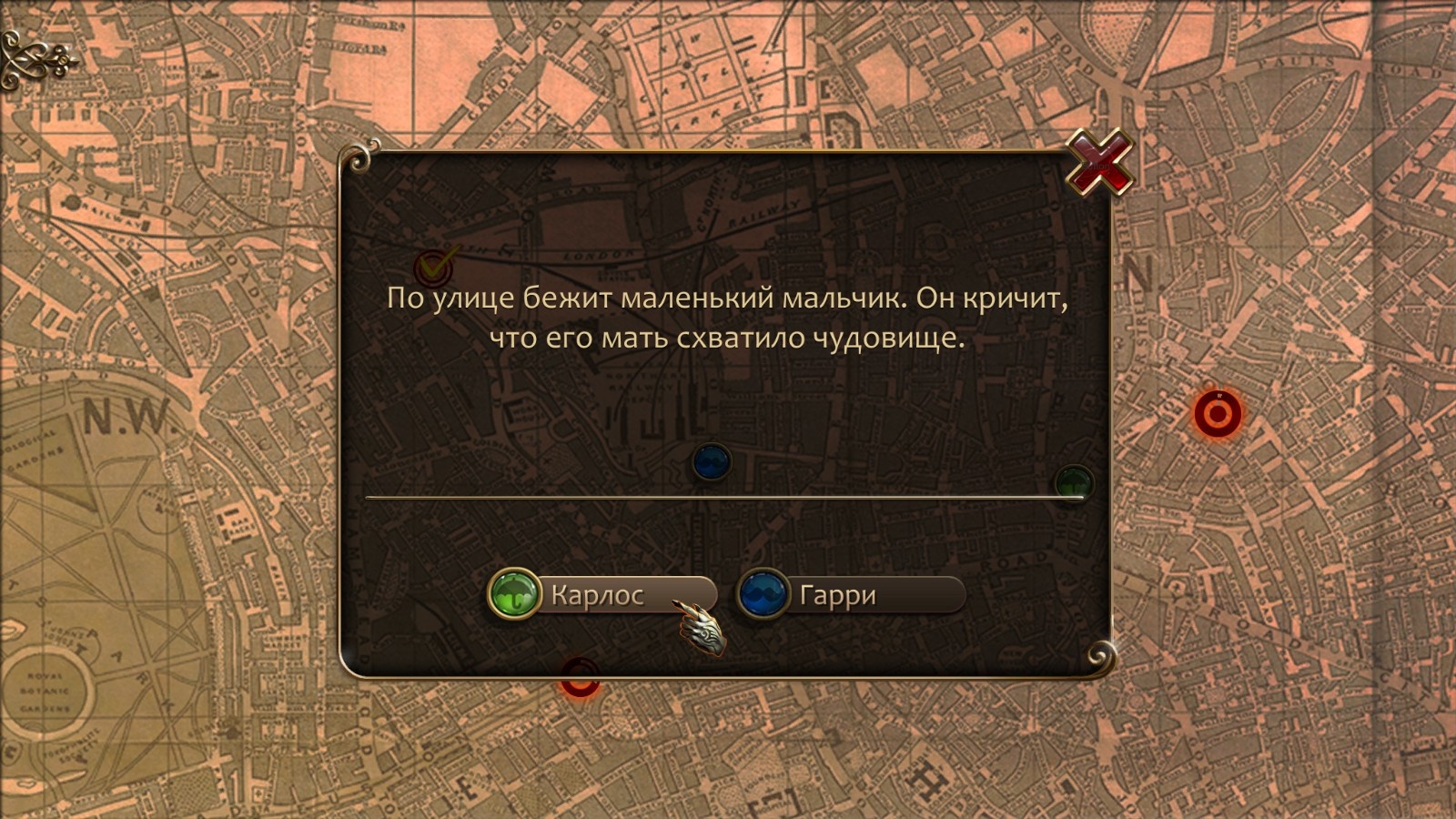From simple to complex: the history of the development of mechanics One Day in London
In the first days of March 2016, the first episode of One Day in London, the OWL-studio image project, was released on Steam. Vera Velichko, founder and art director of the Moscow studio, before the release of the fifth episode, recalls how the mechanics in her visual novel developed.
Vera Velichko
We have grown a lot over the past 2 years in terms of skills and competencies. As part of other projects, the team has been developing more complex and classic gameplay mechanics for a long time. But for me, to this day, the greatest pleasure remains working on simple interactivity for One Day in London.
A novella is a book. A book with a huge number of illustrations that communicates with you, reacts to your actions. However, first of all, it is the format of reading history. And in this format, episodes when suddenly part of the narrative is expressed through direct actions feel like a little magic.
Today I want to talk about how the game design of the visual novel One Day in London has developed from the first days of development to today.
First of all, the game design was there, despite all the executions of the original plan. The first sketches and concepts took us towards quests and even a simple RPG. However, at that time we did not have the resources for a cool project of this kind. So the choice was simple: a mediocre quest or a cool visual novel. Of course, we settled on the second one.
However, I didn’t want to clean up the interactive theme at all. There was a desire to leave the reader the opportunity to relax, get a new experience and stretch his fingers. Thus, episodic mini-games appeared in the novel, completely embedded in the plot. The latter is important. We were once asked if our novel is not another “puzzle with a story”: of course not, it has about 3 million characters. For comparison: in the “Master and Margarita” about 700 thousand.
Now, when the work on the last chapter of the novel is coming to an end, I decided to share how mini-games developed within the framework of the project, how they grew from casual, more designed for interactive mechanics into complex and complex solutions.
Chapter 1
In the first episode, the mini-games were very simple. The most common was the mechanics of drawing runes: it was necessary to draw a specific symbol on the screen with the mouse.

Initially, for this mechanics, we used a utility called $P Point-Cloud Gesture Recognizer.
The point was that this utility could be “taught” to recognize certain symbols: we draw several outlines of the correct symbol and tell the program that this is correct. Then she had to be taught the wrong symbols, which she would recognize as incorrect. Otherwise, she considered any conditionally similar krakozabra correct. The most difficult thing was to find the optimal number of correct and incorrect values of the symbol, in which the program would no longer consider “some conditional stuff” to be true, but it was not yet crazy about the number of options (too similar correct and incorrect options sometimes led to the most unexpected conflicts).
In the third chapter, after moving to Fungus*, we wrote our utility. Everything was simpler here: she simply read the location of the pixels of the sprite of the correct symbol and counted the drawn sign as correct if it coincided with this sprite by a certain number of percent.
*Fungus is a free open source tool for Unity. It allows you to create quests, hidens, interactive novels without programming (using blueprints).
The most interesting point of using this mechanics was the imitation of a combat situation: when a demon attacked, it was necessary to draw runes in the correct order. For passing the rune battle without a single mistake, the reader received one of the achievements – “Eye diamond”.

The second most common mechanic in the first chapter was “hidden object search”. Compared to the classic hogs, the mechanics were quite simple. For example, you had to find all the books with a certain symbol on the shelf. I’m sure anyone can cope with this task in 15 seconds.

We also added one of the variants of the classic “Memory” to the game. In the game, it was necessary to arrange the runes in the circle in the correct order.
We decided not to complicate the player’s life too much and made it so that the location of the runes can be peeped (in the book in the lower left corner of the screen).

In total, there were 8 mini-games on 4 mechanics in the first chapter. In addition to the already mentioned, there was also a game “Search on the map”.
Chapter 2
In the second chapter, the main mechanics were puzzle games for the correct sequence of actions.
The reader had to either try his hand at making potions according to the recipe (success was ensured by the right sequence and number of ingredients), or light candles in the right order to get a chiaroscuro pattern on the wall, or pacify the possessed girl by tightening the straitjacket straps in the right order.

However, the main mechanics remained drawing runes. However, we, like our players, began to get tired of it. The mechanics turned out to be unusual, but they didn’t really catch on. In the second chapter, according to user requests, we even added a “Skip” button for those who wanted to return to the story faster.
Chapter 3
In the third chapter, we have a new favorite mechanic: puzzles for making the right picture by moving and rotating its fragments. We’ve played it a lot ourselves. The players also returned to it.
Perhaps it was all about the bright art. Against the background of desaturated, gloomy London, overwhelmed by all sorts of evil spirits, this art perfectly switched attention to itself.

In addition to the puzzle, mini-games for accuracy and reaction appeared. For example, we have added lockpicking.

The idea to make an interactive shooting at the possessed caused a storm of emotions among the team. Shooter in the genre of a visual novel – sounds fresh.

In total, there were already 11 mini-games in the third episode, seven of which were with new mechanics that had not been seen before.
Chapter 4
In the fourth chapter we went further. In addition to simple mini-games, we have introduced two games with complex mechanics that require real involvement in the gameplay.
The first is an investigation game. A map of London appeared with a list of updated incident points and a display of the movement of our team. By sending team members to the incident points, the player makes a decision that may turn out to be right or wrong.

The second innovation is a new rune–based fighting technique. We have completely revised it. Drawing runes is no longer necessary, we just choose the right one. At the same time, the fight itself is more complicated. Both the hero and the enemy have health, protection and energy scales, the runes themselves have become more, and the outcome of the battle affects the plot.

In the fourth chapter, we did not increase the number of games. There were 11 of them, as in the third.
Chapter 5
The fifth and final chapter is still in the works. We are facing a difficult task. The finale should be a bright, dynamic, positive impression of the game as a whole culmination of the whole story. It depends on how the player goes through the last chapter, whether he wants to go through alternative storylines (in total, a novel can have three different endings, and by the fifth chapter, the character of the hero and the narrative changes greatly depending on the branch).
The fifth chapter is one of the shortest in terms of text (only the first one is shorter), but the most eventful. The measured narration of the first three chapters was replaced by a more intense one in the fourth, and in the fifth there is no room for reflection anymore: a chain of consequences unfolds before the reader, to which his choice led throughout all the previous chapters.
The fifth chapter also leads in the number and variety of mini-games. There are also “locations of free movement” in it. This makes the episode look more like a full-fledged quest than a novel. And the tasks become really difficult.

At the moment, 18 mini-games are planned for the fifth episode.
The natural growth of the team’s skill, the natural desire to come up with something new turned out great with the original idea. Even when working on the first demo reports on the project, I wrote that the increase in the number and complexity of mini-games should be gradual.
At the beginning, we need to prevent situations in which the reader will skip the text to get interactive. We need to make it clear right away that the main process in this product is reading, and the main interest is the plot. But then, when the reader is already sufficiently involved in the story, we can add more interactive, surprising our reader, making his impressions richer. The last chapter, according to our idea, should leave the impression of an action movie (as far as this term is applicable to the genre of a visual novel).
Ahead of the field trials of the fifth chapter on testers. We look forward to it, and we will keep you informed!

